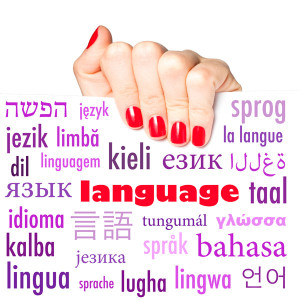
Tracing languages back is one of the most useful tools in understanding how groups of people have moved, changed, and interacted. The dialects that turned to languages as they diverged and migrated to new areas and the words they borrowed from new groups they met all can provide a history of interactions using the words we speak today as a record. In some cases, written records such as Sanskrit Vedic texts or Old Norse written epics can contribute to the data that their respective daughter languages provide.
The two main techniques used to reconstruct languages are the Comparative method and Internal reconstruction, each with different goals but often used in tandem to create a complete picture of a language’s history. The comparative method by definition uses two or more languages to determine a common linguistic ancestor, with the ideal end result to partially reconstruct their parent language, also known as a proto-language. When historical linguists compare two potentially related languages, they first establish a list of commonalities or cognate terms in order to determine sound correspondence. One example of sound correspondence between Germanic Indo-European languages and Non-Germanic Indo-European languages is the shift from “kw” in non-Germanic to “hw” in Germanic. As a result, sound correspondence reveals the relation between the Romance: “quod,” “qué,” and “quoi,” versus the Germanic: “what,” “ƕa,” and “hvad.” In contrast, internal reconstruction analyzes changes within a single language to determine how it transformed over time. Using historical written records as well as techniques to analyze modern vocabulary and speech patterns, historical linguists can determine which features of a modern language are recent developments and where they came from.
Because languages that come in contact with each other can share features without necessarily sharing linguistic ancestry, historical linguists focus more on shared linguistic innovation than on shared vocabulary when attempting to establish a common proto-language. This practice of borrowing words can, however, help to trace how and when groups came in contact. Although their linguistic heritage is distinctly Latin based, both Portuguese and Spanish share a great deal of vocabulary with Arabic thanks to the centuries of Islamic rule in the medieval Iberian Peninsula.
Proto-Indo-European, Proto-Uralic, and Proto-Dravidian are all widely accepted proto-languages, although numerous other proto-languages are also objects of intense study. Each of these plays a role in relation to the archeological record as the scientific community continues to propose patterns and routes for the movement of pre-historic groups of people. Historical linguistics is one of the most important fields in determining the development of technology based on shared vocabulary around certain fields, such as agriculture. If you’re interested in the relationships of specific languages, take a look at this artistic representation of the Indo-European and Uralic languages groups.
Let us know in the comments what your experience with the history of language is and what you hope this field can bring to light!
You might also be interested in: The History of Simultaneous Interpretation






